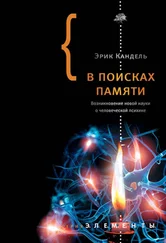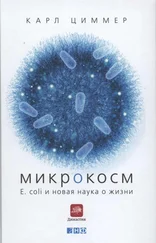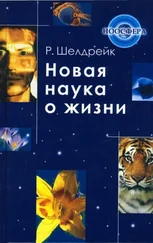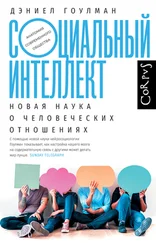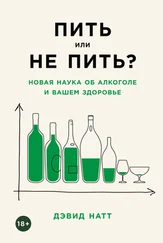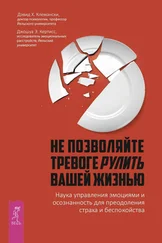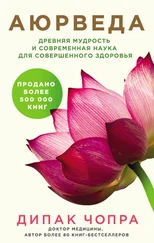45 Lipson et al. “Reconstructing Austronesian Population History”.
46 A. Wollstein et al. “Demographic History of Oceania Inferred from Genome-Wide Data”, Current Biology 20 (2010): 1983–1992; M. Kayser. “The Human Genetic History of Oceania: Near and Remote Views of Dispersal”, Current Biology 20 (2010): R194–201; E. Matisoo-Smith. “Ancient DNA and the Human Settlement of the Pacific: A Review”, Journal of Human Evolution 79 (2015): 93– 104.
47 D. Reich et al. “Denisova Admixture and the First Modern Human Dispersals into Southeast Asia and Oceania”, American Journal of Human Genetics 89 (2011): 516–528; P. Skoglund et al. “Genomic Insights into the Peopling of the Southwest Pacific”, Nature 538 (2016): 510–513.
48 R. Pinhasi et al. “Optimal Ancient DNA Yields from the Inner Ear Part of the Human Petrous Bone”, PLoS One 10 (2015): e0129102.
49 Skoglund et al. “Genomic Insights”.
50 Там же.
51 Неопубликованные данные лабораторий Дэвида Райха и Йоханнеса Краузе.
52 Там же.
Глава 9. Африка снова включается в историю человечества
1 J. Lachance et al. “Evolutionary History and Adaptation from High-Coverage Whole-Genome Sequences of Diverse African Hunter-Gatherers”, Cell 150 (2012): 457–469.
2 V. Plagnol, J. D. Wall. “Possible Ancestral Structure in Human Populations”, PLoS Genetics 2 (2006): e105; J. D. Wall,
K. E. Lohmueller, V. Plagnol. “Detecting Ancient Admixture and Estimating Demographic Parameters in Multiple Human Populations”, Molecular Biology and Evolution 26 (2009): 1823–1827.
3 M. F. Hammer et al. “Genetic Evidence for Archaic Admix ture in Africa”, Proceedings of the National Academy of Sciences of the U.S.A. 108 (2011): 15123–15128.
4 K. Harvati et al. “The Later Stone Age Calvaria from Iwo Eleru, Nigeria: Morphology and Chronology”, PLoS One 6 (2011): e24024; I. Crevecoeur, A. Brooks, I. Ribot, E. Cornelissen, and P. Semal. “The Late Stone Age Human Remains from Ishango (Democratic Republic of Congo): New Insights on Late Pleistocene Modern Human Diversity in Africa”, American Journal of Physical Anthropology 96 (2016): 35–57.
5 Неопубликованные данные лаборатории Дэвида Райха.
6 D. Richter et al. “The Age of the Hominin Fossils from Jebel Irhoud, Morocco, and the Origins of the Middle Stone Age”, Nature 546 (2017): 293–296; J. G. Fleagle, Z. Assefa, F. H. Brown, J. J. Shea. “Paleoanthropology of the Kibish Formation, Southern Ethiopia: Introduction”, Journal of Human Evolution 55 (2008): 360–365.
7 H. Li and R. Durbin. “Inference of Human Population Histo ry from Individual Whole-Genome Sequences”, Nature 475 (2011): 493–496.
8 Li, Durbin. “Inference of Human Population History”; K. Prüfer et al. “The Complete Genome Sequence of a Neanderthal from the Altai Mountains”, Nature (2013): doi: 10.1038/nature12886.
9 P. H. Dirks et al. “The Age of Homo Naledi and Associated Sediments in the Rising Star Cave, South Africa”, eLife 6 (2017): e24231.
10 I. Gronau et al. “Bayesian Inference of Ancient Human Demography from Individual Genome Sequences”, Nature Genetics 43 (2011): 1031–1034.
11 P. Skoglund et al. “Reconstructing Prehistoric African Population Structure”, Cell 171 (2017): 5694.
12 S. Mallick et al. “The Simons Genome Diversity Project: 300 Genomes from 142 Diverse Populations”, Nature 538 (2016): 201–206; Gronau et al. “Bayesian Inference”.
13 S. A. Tishkoff et al. “The Genetic Structure and History of Africans and African Americans”, Science 324 (2009): 1035–1044.
14 C. J. Holden. “Bantu Language Trees Reflect the Spread of Farming Across Sub-Saharan Africa: A Maximum-Parsimony Analysis”, Proceedings of the Royal Society B – Biological Sciences 269 (2002): 793–799; P. de Maret. “Archaeologies of the Bantu Expansion”, in The Oxford Handbook of African Archaeology, ed. Peter Mitchell and Paul J. Lane (Oxford: Oxford University Press, 2013), 627–644.
15 K. Bostoen et al. “Middle to Late Holocene Paleoclima tic Change and the Early Bantu Expansion in the Rain Forests of Western Central Africa”, Current Anthropology 56 (2016): 354–384; K. Manning et al. “4,500-Year-Old Domesticated Pearl Millet ( Pennisetum glaucum ) from the Tilemsi Valley, Mali: New Insights into an Alternative Cereal Domestication Pathway”, Journal of Archaeological Science 38 (2011): 312–322.
16 D. Killick. “Cairo to Cape: The Spread of Metallurgy Through Eastern and Southern Africa”, Journal of World Prehistory 22 (2009): 399–414.
17 De Maret. “Archaeologies of the Bantu Expansion”.
18 Holden. “Bantu Language Trees”.
19 Bostoen et al. “Middle to Late Holocene”; Manning et al. “4,500-Year-Old”.
20 D. J. Lawson, G. Hellenthal, S. Myers, D. Falush. “Inference of Population Structure Using Dense Haplotype Data”, PLoS Genetics 8 (2012): e1002453; G. Hellenthal et al. “A Genetic Atlas of Human Admixture History”, Science 343 (2014): 747–751; C. de Filippo, K. Bostoen, M. Stoneking, B. Pakendorf. “Bringing Together Linguistic and Genetic Evidence to Test the Bantu Expansion”, Proceedings of the Royal Society B – Biological Sciences 279 (2012): 3256–3263; E. Patin et al. “Dispersals and Genetic Adaptation of Bantu-Speaking Populations in Africa and North America”, Science 356 (2017): 543–546; G. B. Busby et al. “Admixture Into and Within Sub-Saharan Africa”, eLife 5(2016): e15266.
21 Tishkoff et al. “Genetic Structure and History”; G. Ayodo et al. “Combining Evidence of Natural Selection with Association Analysis Increases Power to Detect Malaria-Resistance Variants”, American Journal of Human Genetics 81 (2007): 234–242.
22 C. Ehret. “Reconstructing Ancient Kinship in Africa”, in Ear ly Human Kinship: From Sex to Social Reproduction, ed. Nicholas J. Allen, Hilary Callan, Robin Dunbar, Wendy James (Malden, MA: Blackwell, 2008), 200–231; C. Ehret, S. O. Y. Keita, P. Newman. “The Origins of Afroasiatic”, Science 306 (2004): 1680–1681.
23 J. Diamond, P. Bellwood. “Farmers and Their Languages: The First Expansions”, Science 300 (2003): 597–603; P. Bellwood. “Response to Ehret et al. ‘The Origins of Afroasiatic,’ ” Science 306 (2004): 1681.
24 D. Q. Fuller, E. Hildebrand. “Domesticating Plants in Africa” in: The Oxford Handbook of African Archaeology, ed. Peter Mitchell, Paul J. Lane (Oxford: Oxford University Press, 2013), 507–526; M. Madella et al. “Microbotanical Evidence of Domestic Cereals in Africa 7000 Years Ago”, PLoS One 9 (2014): e110177.
25 I. Lazaridis et al. “Genomic Insights into the Origin of Farming in the Ancient Near East”, Nature 536 (2016): 419–424; Skoglund et al. “Reconstructing Prehistoric African Population Structure”.
26 Lazaridis et al. “Genomic Insights”; Skoglund et al. “Reconstructing Prehistoric African Population Structure”; V. J. Schuenemann et al. “Ancient Egyptian Mummy Genomes Suggest an Increase of Sub-Saharan African Ancestry in Post-Roman Periods”, Nature Communications 8 (2017): 15694.
27 T. Güldemann. “A Linguist’s View: Khoe-Kwadi Speakers as the Earliest Food-Producers of Southern Africa”, Southern African Humanities 20 (2008): 93–132.
Читать дальше
Конец ознакомительного отрывка
Купить книгу
![Дэвид Райх Кто мы и как сюда попали [Древняя ДНК и новая наука о человеческом прошлом] обложка книги](/books/396012/devid-rajh-kto-my-i-kak-syuda-popali-drevnyaya-dnk-i-cover.webp)
